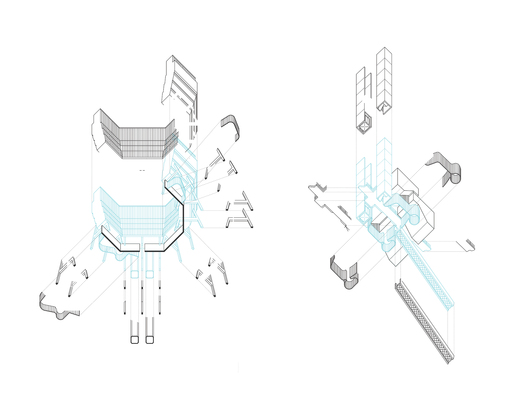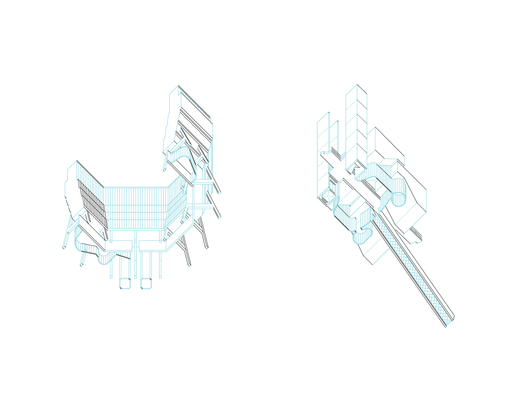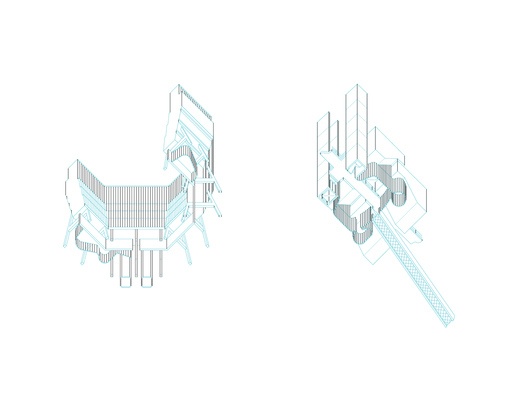
by Kasia Zycinska
By analyzing what and how James Stirling drew, this drawing study searches for architect’s signature curve.
Isometrics exploded into distinct building components
Isometric and perspectival projections became an important method of architectural representation for Stirling, not only as a presentation technique, but as a design method. The architect would often isolate a specific portion of a building and represent it as a three-dimensional composition viewed either from above or below.
This method of representation allowed him to express how the singular parts work together to create a larger whole — a simultaneous visualization of function and structure. Breaking up a building into discrete parts allowed Stirling to explore relationships between volumes and voids and articulation of program as a series of semi-autonomous pieces.

 Analysis based on the physical production of Stirling’s projections – hand-drafted with parallel bar executed in sequence of line sets of specific direction
Analysis based on the physical production of Stirling’s projections – hand-drafted with parallel bar executed in sequence of line sets of specific direction
The presented drawing sets feature Stirling’s iconic worm’s eye view isometric projections and analyze them in terms of how Stirling utilized this drawing mode — to express how discrete programmatic and structural components work together — as well as how physically the drawing was produced with — the parallel bar, in sequence of lines of specific direction.

Taxonomy of discrete lines that constitute the given the drawing of the building components
The exploration of Stirling’s signature graphic representation strives to isolate Stirling’s signature line: curve juxtaposed against a straight line. The specific proportions of Stirling’s curves create incredibly compelling compositions. Infused with program and structure, the two dimensional lines enable emergence of equally compelling spaces that can be inhabited. These specific curvatures represent freed, ribbon-like curtain glass walls spanning around rigid cores inclosing semi-private spaces of civic nature. The iconic curve of Stirling’s glazing emerges from two composite curves: one derived from tangent circles with one of a radius twice in size then the other and second – with two circles of specific proportions pulled apart by tripling the R distance.

Curvature analysis to isolate Stirling’s two signature lines.
To learn more, visit:
http://kasia-zycinska.com/Kasia_Zycinska_Design/Architecture/Pages/Infamous_Lines.html
During the event the guests presented their ideas on the role and importance of the medium of Drawing. Each participant to provided a lens, through which drawing is seen – as an agency of design exploration, rhetorical expression, informative data set, conceptual framework, or... View full entry
The technique of drawing is a very distinct architectural element. As Architects, we draw lines for notions of aesthetic, concept, as well as production. Drawing is considered an extension of our thoughts (concept) and vessel to communicate our ideas (technique). Every drawing however has imbedded in it a signature, expression, and authenticity. What is the relationship between lines and our individual design ideologies?


